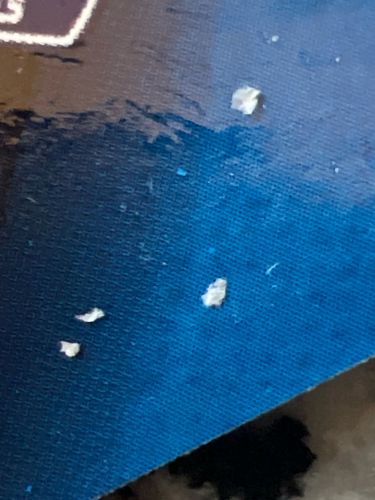Carpet Beetle larvae casing or frass
Scientific Name: Anthrenus (for varied carpet beetle) or Trogoderma (for warehouse beetle), specific species depends on morphology which is unclear
Order & Family: Coleoptera, Dermestidae
Size: Casing/frass varies, but larvae are typically 2-5 mm long. The debris in the image appears to be a few millimeters.

Natural Habitat
Indoor environments, particularly in undisturbed areas where food sources (fibers, animal products) are abundant. Often found in carpets, rugs, upholstered furniture, closets, and pantries.
Diet & Feeding
Larvae feed on a wide variety of animal and plant products, including wool, silk, feathers, leather, furs, pet hair, dried meat, cereals, and stored food products. They do not consume synthetic fibers.
Behavior Patterns
Carpet beetle larvae are typically secretive, avoiding light. They shed their skins multiple times as they grow, leaving behind these characteristic hairy casings (exuviae). They move slowly and can sometimes be found crawling on surfaces near their food source. Adults are often found outdoors feeding on pollen and nectar.
Risks & Benefits
Potential risks include damage to textiles, clothing, carpets, and stored food products. Their hairs can also cause skin irritation or allergic reactions in some individuals. They do not bite or transmit diseases. There are generally no known benefits to humans from their presence indoors, but outdoors, adult carpet beetles contribute to pollination.
Identified on: 10/29/2025